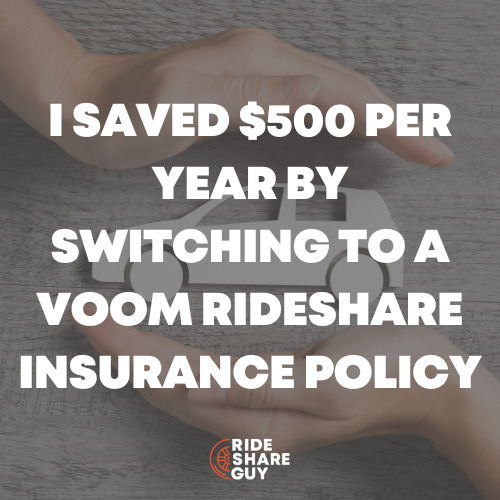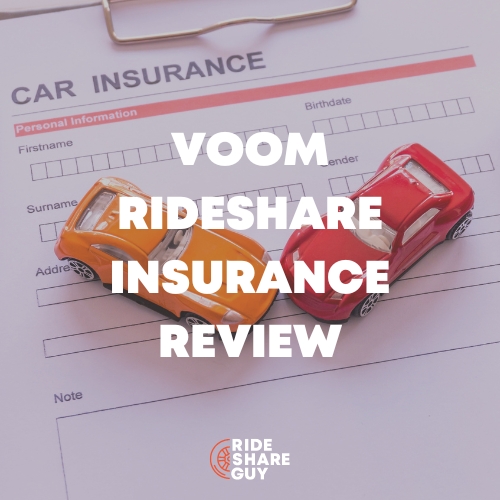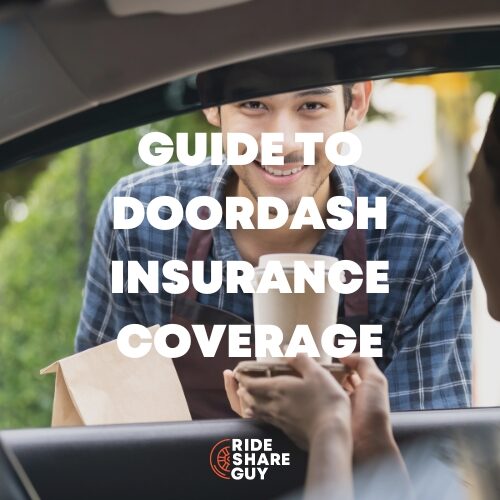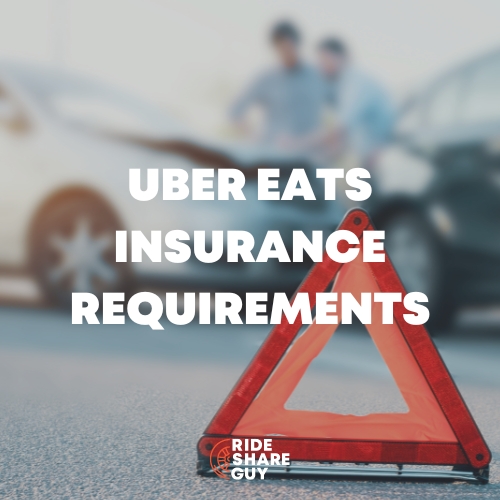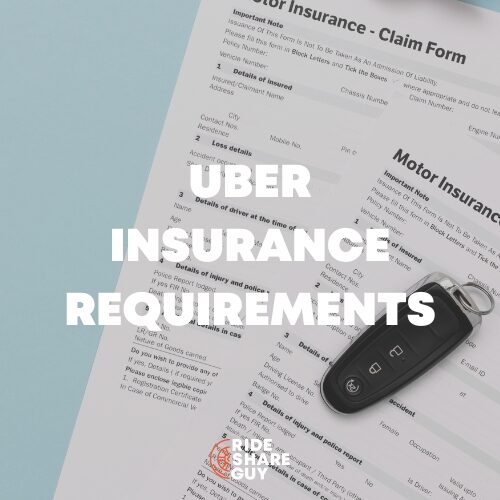Insurance can be a daunting task in the best of circumstances. Add rideshare into the mix and the average person can find it very confusing.
How do you know what coverage is needed? Are you going to be paying a lot more for full coverage?
In this article, we’ll cover the top things drivers should know about rideshare insurance.
However, the number one thing I want you to take away from this is that you absolutely need rideshare coverage if you’re a rideshare driver. Otherwise, you’re not as well covered as you may think.
Quick Summary:
- Not all insurance companies offer rideshare coverage
- If you don’t get a rideshare endorsement on your personal policy, you may find yourself without any insurance if you get into an accident on the job
- Adding a rideshare endorsement does not have to mean it’ll cost you thousands more than your regular policy. Shop around for what works best for you
Rideshare vs Delivery vs Standard Insurance
Yes, you will want delivery insurance for your food delivery driving! Find our top recommended delivery insurance agents.
If you’re just learning about rideshare insurance and not sure why you need it, it’s because as a rideshare driver, you need to be especially mindful of the risks and insurance limits in your state.
There are many states where there isn’t an officially recognized rideshare insurance policy and, although you may still be covered by Uber/Lyft, your personal insurer may drop you for being a rideshare driver. You don’t want your income stream cut off before rent is due next month!
Learn more about how delivery insurance works here: How Delivery Insurance Works For Uber Eats & DoorDash Drivers
Uber and Lyft only cover rideshare drivers during Periods 2 and 3. Period 2 starts once you accept a ride request and are en route to your passenger, and Period 3 starts once your passenger gets into your car.
However, when you’re online and waiting for a request during Period 1, you have no collision coverage from Uber or Lyft and much lower liability limits.
This means as a rideshare driver, you’re most at risk during Period 1 since you won’t get any collision coverage from rideshare companies and your personal insurer likely won’t cover you during this time either.
Take a look at our video below: What’s the difference between rideshare insurance and commercial insurance?
As Allstate agent Doug Eisold notes,
“It’s actually quite shocking how many people will drive knowing they do not have the protection for rideshare! We do not think that they realize what the impact could be if they are found to be driving rideshare without the coverage, including:
-Denial of the claim. This means they would have to pay to fix their car and other party’s car
-Be liable for bodily injuries, and in CA they can seek 25% of your wage up to 10 years as well as go after your personal assets (home, auto, retirement, cash, etc.)
You have to ask, is it worth the risk?”
Doug Eisold, Allstate insurance agent in California
RSG’s stance is it’s absolutely not worth the risk to drive without rideshare insurance. If you’re in California, consider reaching out to Doug of Allstate to learn more about your options, or keep reading below if you’re not a CA driver.
Exploring the Cost of Rideshare Insurance
Rideshare insurance is widely available these days and even some of the most well-known insurance providers are offering competitive coverage levels for drivers. Here’s what some of the top 4 big names in the industry offer.
Allstate Rideshare Insurance
Allstate offers a rideshare endorsement to your regular auto insurance policy which will help cover your vehicle while you’re rideshare driving. Allstate’s rideshare endorsement helps close the infamous Period 1 coverage gap when Uber and Lyft’s insurance won’t cover you if you get into an accident when the app is on and you’re waiting for a trip.
However, Allstate’s endorsement won’t cover you during Periods 2 and 3 when Uber and Lyft’s insurance would cover you. With this policy, you’d also get deductible gap coverage so if you did need to file a claim through Uber or Lyft, Allstate would reimburse you for a portion of that deductible, so that it matches the deductible on your personal policy.
For example, if you have to pay Lyft’s high deductible of $2,500 and your Allstate insurance deductible is only $500, you’d get reimbursed the difference.
Adding a rideshare endorsement to an existing policy can only cost you an extra $10 – $20 per month.
GEICO Rideshare Insurance
Geico offers rideshare insurance in most states and they offer a hybrid coverage option that covers you when you drive rideshare along with when you drive for personal reasons.
Geico’s rideshare insurance is comprehensive and covers you for all three periods of Uber and Lyft driving including when the app is on and you are waiting for a passenger (Period 1) when you’re en route to a passenger (Period 2), and when passengers are in your car (Period 3).
This hybrid insurance also covers you when you’re doing food delivery (Uber Eats for example) and there are no strict mileage restrictions.
You will have to contact GEICO for costs, as it varies by state.
Note: GEICO can be notoriously difficult when it comes to getting rideshare insurance. Many readers have written to us stating GEICO does not offer rideshare insurance, but when we reached out to GEICO, their response is you have to ask for “business auto insurance.” This is similar to commercial auto insurance.
This type of insurance offered by GEICO will cover you for rideshare driving, but you must know what to ask for.
State Farm
State Farm is another company that offers ‘gap coverage’ for rideshare drivers that extends to your personal policy to include Period 1 coverage. In fact, State Farm’s rideshare insurance can provide you with some amount of coverage during all 3 periods for rideshare drivers.
According to State Farm reps, adding a rideshare coverage endorsement “typically adds about 15–20 percent to your current premium.”
Here’s how State Farm rideshare insurance works:
Farmers
Farmers was one of the first insurers to offer rideshare endorsements. Like many other companies, they offer ‘gap coverage’ for rideshare drivers which can be added to a standard personal policy. While Farmer’s rideshare insurance is not a commercial policy, it does extend coverage through Period 1 so you’re completely covered when rideshare driving.
You can expect to pay about 25% more for your Farmers policy with a rideshare endorsement, but you won’t have to worry about getting dropped for driving for companies like Uber or Lyft. Another perk is that Farmer’s offers a rental car/loss of use option where they will provide you with a rental car or a set amount per day each day that your car is out of commission. There are caps for this of course, but it’s a nice benefit to have overall.
USAA Rideshare Insurance
USAA offers rideshare insurance as an add-on option to an existing USAA auto policy. Because of this setup, the total cost will be only slightly more than a regular policy – and USAA policies themselves are some of the most affordable policies anywhere, making it an extremely good deal.
One of our readers reported that USAA’s rideshare addendum cost them an extra $16 per month. For some drivers, it’s as low as $6. Another reader and Uber driver reported that her total 6-month cost to insure a 2015 Nissan Sentra through USAA came to just $385 – including the rideshare add-on. You’d be hard-pressed to find a cheaper policy anywhere.
USAA has a pretty good reputation as an insurer, and although their rideshare coverage isn’t the most thorough, it does offer what’s known as “gap coverage” or “period one coverage.”
After doing some shopping around in California, I found that there was a range of $113 to $205 a month for rideshare insurance, which is in line with what I’ve found for most other drivers.
If you have a better driving record or you live in an area that is cheaper to insure, you may be on the lower end. But for a lot of drivers, the average quote may come in at around $150/month.
One thing to keep in mind is what all is covered by each insurance company. For instance, in my research for the price range, I found that State Farm was the only company that offered coverage for all three periods instead of just period one so you can fully process your claim through State Farm instead of going through the TNC.
Buckle Rideshare Insurance
Buckle is insurance specifically for rideshare drivers, which means they know exactly what drivers need to be fully covered. Buckle isn’t yet available nationwide, but if you live in Georgia, Illinois, Tennesee, Texas or New Jersey, you’ll want to check them out.
Since Buckle only works with rideshare drivers, it’s probably safe to assume they know what they are doing in any rideshare-related situation that comes up. If you have an issue, you should be able to contact Buckle and they will take care of you.
Buckle also seems to know what rideshare drivers need in coverage, offering it in one policy instead of having to add rideshare coverage. With Buckle, you’re just automatically covered for all situations.
Learn more here: Buckle Insurance Expands To Cover Delivery Drivers!
Which companies can help you avoid high deductibles?
Allstate and State Farm are your best bets to avoid high deductibles as an Uber or Lyft driver.
Allstate’s program helps pay the difference of the deductible you have with them, and what you would owe in periods 2 and 3.
For example: If you have a $500 deductible on your policy with Allstate, Allstate could pay the difference if you have an accident in periods 2 and 3 to Uber and Lyft, in this case $500 to Uber and $2,000 to Lyft.
State Farm’s rideshare endorsement is more extensive than most other options since they extend their coverage limits during periods 1, 2 and 3. This means that your personal deductible will be in effect any time you are behind the wheel, even when you are driving for Uber or Lyft.
Also, if you have other coverages such as medical, towing and rental car coverage, those will also be in effect even when driving for Uber and Lyft.
Shopping around and knowing what you want while comparing what each company offers is the best way to go about finding the right rideshare insurance for you.
Final Thoughts
You don’t want to find yourself in the precarious situation of not being insured if you have the wrong coverage or if your insurance company decides to drop you for not disclosing your rideshare and delivery services.
Do some preliminary research and get quotes from the available insurance companies in your state. Ask questions like which periods you’re covered during with their services. Also, see if there are different tiers of coverage that will better suit your needs and budget.
How does their rideshare insurance coverage work? Do you submit claims through Uber or Lyft and then contact your insurance? Or should you go through your insurance first each time?
Be prepared. Be safe. Find coverage.
See a breakdown of insurance offerings by state and learn more about rideshare insurance here.
What are you currently using for insurance coverage?
-Paula @ RSG
